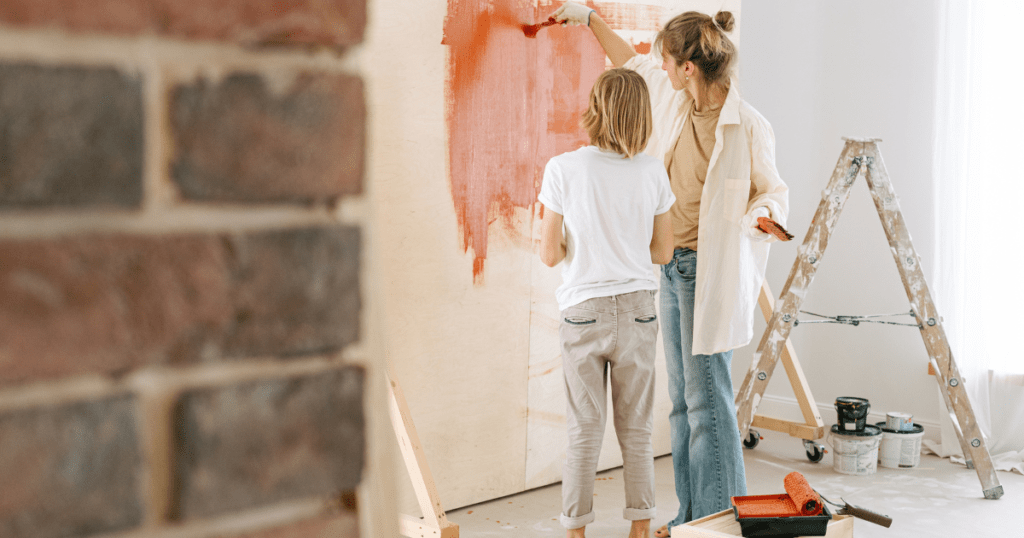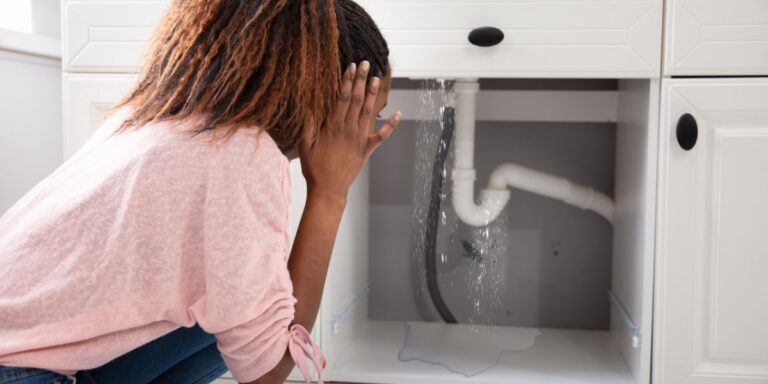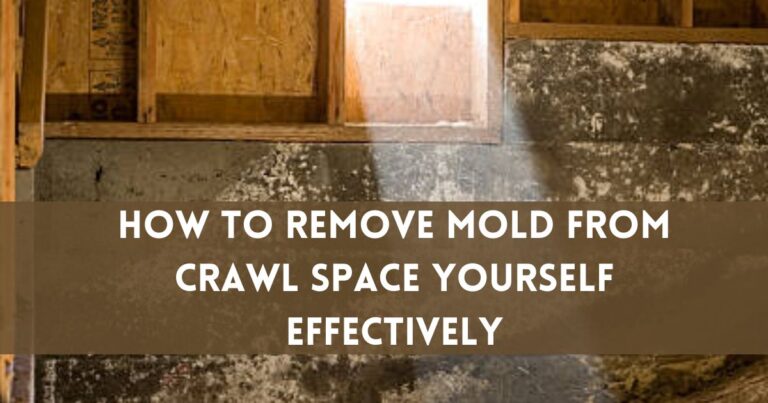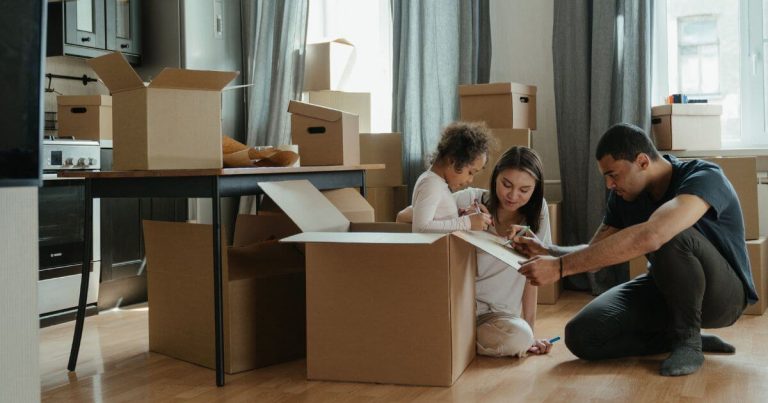Painting The Walls Or Installing Cabinets – What Comes First?
Installing cabinets and countertops in a kitchen or bathroom can be a major renovation project that requires careful planning and execution. One important decision that homeowners must make is whether to paint the walls before or after installing the cabinets and countertops.
So, what should come first – painting the walls or installing cabinets and countertops? Ideally, you should paint the walls before installing the cabinets and countertops. This allows easier access to all wall areas and eliminates the need to paint around the cabinets carefully. Additionally, it allows for any touch-ups or corrections to be made before the cabinets and countertops are permanently installed.
However, suppose the kitchen is being completely gutted, and all new sheetrock is being installed. In that case, it may be possible to paint after the cabinets are installed as long as the walls are properly primed beforehand.
Why Paint Walls Before You Install Cabinets and Countertops?

Transforming how your kitchen or bathroom looks is a big undertaking. But taking the proper steps and finding the right order of operations can make a big difference. While you may be tempted to install cabinets and countertops first, painting the walls before installing the cabinetry and counters can make the job easier and help your new space look its best. Here are some of the benefits of painting the walls before installing cabinets and countertops:
A fresh coat of paint can enhance the appearance of the room
A freshly painted wall can provide a clean and finished look to the room, making it feel more inviting and welcoming. Additionally, having a fresh coat of paint allows you to select colors that will coordinate well with the cabinets and countertops. This can help to create a cohesive, attractive look throughout the room.
Painting can protect the walls from damage
During the cabinets and countertops installation process, there is always a risk of accidental damage to the walls. Painting before installation can provide an extra layer of protection and make it easier to touch up any areas that may be accidentally damaged during installation.
It is easier to paint without the obstruction of cabinets and countertops
Installing cabinets and countertops can be time-consuming and labor-intensive, so it is vital to ensure that everything is aligned correctly and securely fastened. Painting before installation can help to ensure that the walls are smooth and free of any imperfections, making it easier to achieve a professional-looking finish.
Touching up paint after installation is possible
If the cabinets and countertops are installed first, and any accidental damage is discovered, it can be more challenging to touch up the paint without damaging the new cabinets and countertops. By painting the walls beforehand, homeowners can touch up any areas needing attention after completing the installation.
Protecting the walls from potential damage during countertop installation
Installing countertops can also risk damage to the walls, especially if heavy-duty tools or equipment are needed. Painting the walls beforehand can provide an extra layer of protection and make it easier to touch up any areas that may be damaged during the installation process.
What To Consider When Deciding Between Painting Wall Before Countertop Installation
Any home improvement project has one goal: to make the space as aesthetically pleasing and functional as possible. While painting before installing cabinets and countertops can have some benefits, there are also a few things to consider before making a final decision:
Allowing the paint to fully dry
It is important to allow the paint to dry fully before beginning the countertop installation process. If the paint is not completely dry, it may be more prone to chips and scratches during installation.
How long it will take for the paint to dry will depend on the paint used, humidity levels in your area, and the amount of ventilation available. You may have to wait 2-3 weeks for the paint to dry correctly and for the smell to disappear completely. Some people speed up the process by installing a dehumidifier with a fan and setting it too low.
Removing outlet covers and switch plates
It may be necessary to remove outlet covers and switch plates before painting and reinstall them after the paint has dried. This can be time-consuming, but it is necessary to ensure a smooth and professional-looking finish. You don’t want any visible lines or seams in your paint job.
Protecting adjacent surfaces and appliances
It may also be necessary to protect adjacent surfaces or appliances from paint splatters during the painting process. This can be achieved with drop cloths or painter’s tape, but it is important to ensure that all surfaces are adequately protected to avoid accidental damage.
Painting walls may require special preparation
Before painting, it may be necessary to prepare the walls for the new coat of paint. This may include filling in cracks or holes, sanding rough surfaces, or applying a primer. Proper preparation can ensure a smooth and even finish and can help the paint last longer.
Alternatives To Painting Before Countertop Installation
Skipping painting if walls are in good condition and the same color as cabinets and countertops: If the walls are already in good condition and the same color as the cabinets and countertops, it may not be necessary to paint before installing the cabinets and countertops. This can save homeowners time and money and maybe a more practical option for those on a tight budget or timeline.
Installing cabinets and countertops first and then painting around them: In some cases, it may be more practical to install the cabinets and countertops and then paint around them. This can be especially useful if the cabinets and countertops are installed in a small space, as it can help homeowners better understand the overall layout and design before committing to a painting.
Related:
FAQs
Should walls be primed before installing cabinets?
It is generally recommended to prime the walls before installing cabinets. Priming the walls can help to provide a smooth and even surface for the cabinets to be installed on, as well as help to protect the walls from any potential damage during the installation process. It is important to allow the primer to dry fully before beginning the cabinet installation process to ensure a seamless and professional-looking finish.
How long after painting walls can you hang cabinets?
It is generally recommended to wait at least 2-3 days for the paint to dry fully before hanging cabinets. This will allow the paint to set and any fumes to dissipate, which can help to prevent any potential damage to the cabinets. It is also essential to make sure that the paint is completely dry before installing the cabinets to avoid any chips or scratches on the paint.
Should your kitchen cabinets be the same color as your walls?
No rule dictates that kitchen cabinets must be the same color as the walls. Whether to match the cabinets and walls or to use contrasting colors is ultimately a matter of personal preference and depends on the overall design and aesthetic of the kitchen. Some homeowners may prefer the cohesive look of matching cabinets and walls, while others may enjoy the visual interest of contrasting colors.
Bottom Line
Regardless of which option is chosen, it is essential to remember that painting before countertop installation can help protect the walls from damage and make it easier to touch up any areas that may be accidentally damaged during the installation process. Taking the time to properly prepare and protect surfaces before painting can also ensure a smooth and even finish that will last for years to come.







